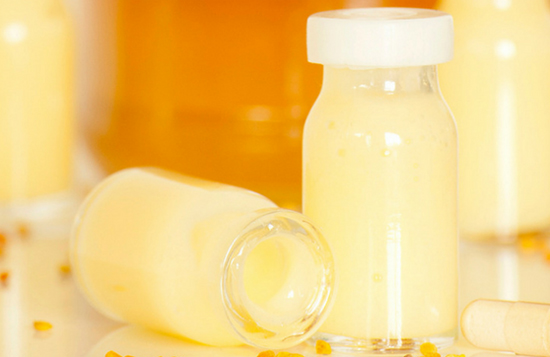Royal Jelly: Anti-Diabetic Healing Gift from the Bee Hive

Bees don’t need us like we need them. If they disappear, our entire modern agricultural system would cease to produce the food we need to survive. But beyond their role in pollination and producing honey, they produce other remarkable gifts as well…
You have probably heard, if the bees die, they are taking us with them. So many of the crops we depend on for our subsistence, thanks to the busy work of these remarkable creatures – specifically, their inadvertent pollination of angiosperms, the plants that most of modern human civilization depend on for their daily nourishment – depend on bees for their prolific food productivity. All the more reason to appreciate what they provide to us. Honey, propolis, beeswax, and even their venom, we now know provide life-saving health benefits. But have you heard about the amazing health benefits of royal jelly?
Royal jelly is an amazing healing compound secreted by bees as both as a form of nourishment for the entire hive and an epigenetic control system used to direct the development of larvae into queen bees. This amazing substance has been extensively researched and demonstrated in the peer-reviewed published research to have over three dozen health benefits.
An exciting new study was published in the Chinese Journal of Integrative Medicine titled, Effects of royal jelly supplementation on glycemic control and oxidative stress factors in type 2 diabetic female: a randomized clinical trial, and explored the healing effects of royal jelly in women with type 2 diabetes.
The researchers sought to confirm royal jelly’s health benefits as both an antioxidant and blood sugar lowering agent, as has been previously reported in preclinical research.
The pilot study involved 50 female subjects with type 2 diabetes who were randomly allocated to receive either a 1,000 mg royal jelly soft gel supplement (25 women) or a placebo (25 women), for 8 weeks.
The women’s blood sugar control indices, antioxidant and oxidative stress factors were measured before and after the intervention with the following results:
“After royal jelly supplementation, the mean fasting blood glucose decreased remarkably (163.05±42.51 mg/dL vs. 149.68±42.7 mg/dL). Royal jelly supplementation resulted in significant reduction in the mean serum glycosylated hemoglobin levels (8.67%±2.24% vs. 7.05%±1.45%, P=0.001) and significant elevation in the mean insulin concentration (70.28±29.16 pmol/L vs. 86.46±27.50 pmol/L, P=0.01). Supplementation significantly increased erythrocyte superoxidase dismutase and glutathione peroxidase activities and decreased malondialdehyde levels (P<0.05). At the end of study, the mean total antioxidant capacity elevated insignificantly in both groups.”
The authors described the effectiveness of royal jelly had in reducing fasting blood sugar (FBG) as “remarkable”, concluding that “supplementation with RJ may be beneficial for diabetic patients”.
They also discovered an insulin-like property to the royal jelly, which they could not determine was due to the stimulation of new insulin production by the beta cells in the pancreases of the test subjects, or the presence of an insulin-like component within the royal jelly itself.
This is the not the first study to identify an anti-diabetic property to royal jelly. In 2008, a study was published in Biological and Pharmaceutical Bulletin describing the amelioration of insulin resistance in fructose-fed rats, finding that “Royal Jelly could be an effective functional food to prevent insulin resistance associated with the development of hypertension”.
Also, in 2007, a study published in the Journal of the Pharmaceutical Society of Japan found that royal jelly significantly decreased systolic blood pressure and serum levels of insulin in insulin resistant rats.
The evidence – now from both human and animal studies – indicates that royal jelly may provide a natural alternative for ameliorating type 2 diabetes. There will never be enough royal jelly, however, to provide sufficient “remedy” to the hundreds of millions who are suffering from type 2 diabetes as a result of a biologically inappropriate diet and incessant chemical exposures, as it is a precious commodity produced by a species of insect that is collapsing under the weight of post-industrial civilization’s toxic fallout.
Royal jelly, while amazing, is only the tip of the honey-coated iceberg.
yogaesoteric
February 5, 2019
